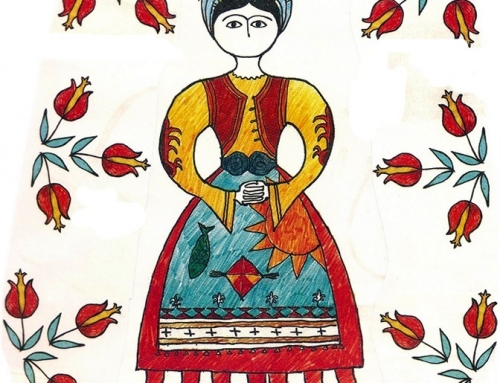In books about local traditions we find ‘general’ traditions for every season of the year, practically for every week of the month too! For today, Thursday, Tsiknopempti, they write about Nettle pie. This tradition required housewives to grapple with making a pie with a rather unusual plant, and tasty vegetable – the nettle.
The pie would be something in times of austerity which could take the place of the smell of cooking meat. Particularly in the villages of Epirus, where at this time nettle-pies will be baked everywhere.
So let’s see how this special day is celebrated in other parts of our country:
The three weeks of Apokries are called Profoni, Kreatini and Tirofagou. It is in the Kreatini week we find Tsiknopempti where according to tradition, large amounts of meat are consumed in preparation for the fasting of Lent. In Orthodox tradition the fasts of Wednesdays and Fridays are important, thus Thursday is the most appropriate day for a binge.
Tsiknopempti gets its name because all homes are roasting meat and the air is filled with the smell of roasting fat – tskina.
According to custom the day of Tsiknopempti:
- In Thebes is the beginning of the “Vlach marriage” which starts with the introduction of the two young people, leads on to marriage and ends up on Clean Monday with the progress of the bride’s dowry and the in-law’s festival. All these processes are full of bawdiness, mirth, feasting and dancing. The “Vlach marriage” is a remnant of the ancient Dionysian cult which perpetuates the orgiastic religion of Semele’s son at Thebes.
- Patras is famed for its Carnival where on midday of Tsiknopempti there are barbecues to be found all over the town, even outside shops. The culmination of the celebrations is in the old part of town and particularly the square and the streets around it. Traditional ‘marriages such as Yannoula and Lazari’, and music make up an evening of meat-eating and wine-drinking. Yiannoula was a real person, a poor woman from the old town who lived before WW2 by selling bread rolls – koulouria. Some locals took advantage of her naivety and told her that she was going to marry President Wilson of the USA. They pretended that Wilson was due to arrive in the harbour by boat and then he would go to the old part of town where the marriage with Yiannoula would take place. The trusting bread-seller welcomed the pretend Wilson, or Loulso as she called him and they always make sure he is dressed in top hat and tails – but until the moment when she realised what was going on, the crowds gathered for the wedding, thoroughly enjoyed themselves. The spectacle has continued for many years.
- In Corfu old town the Korfiote Petegoltsa or petegoulio as they call it, takes place. It is the well-known ‘gossip’ rather like the commedia dell’arte. This takes place on Tsiknopempti evening in the central squares and little streets of the villages, culminating in the old city centre near “Koukounara”. This is where several housewives set up the gossip scenario from the windows of their homes, relating hilarious stories and revealing people’s ‘dirty linen’ to public!
- In Xanthe’s central square there are several events such as the “Evening of Traditional Tastes” where the town’s Folklore Association provide treats with music and dance from different parts of Greece.
- At Xino Nero at Florina, Tsiknopempti is celebrated with a masked ball with an orchestra playing traditional music.
- In Herakleion in Crete, old and young take to the streets and squares in disguise, singing and dancing.
- In Serron large bonfires are lit where the meat is roasted and which the young people leap over.
- In Komotini engaged couples exchange edible presents, proving that the way to the heart is through the stomach.
Translation by: Louisa O’Brien
Source: www.aeginalight.gr
Picture: cookoo.gr



